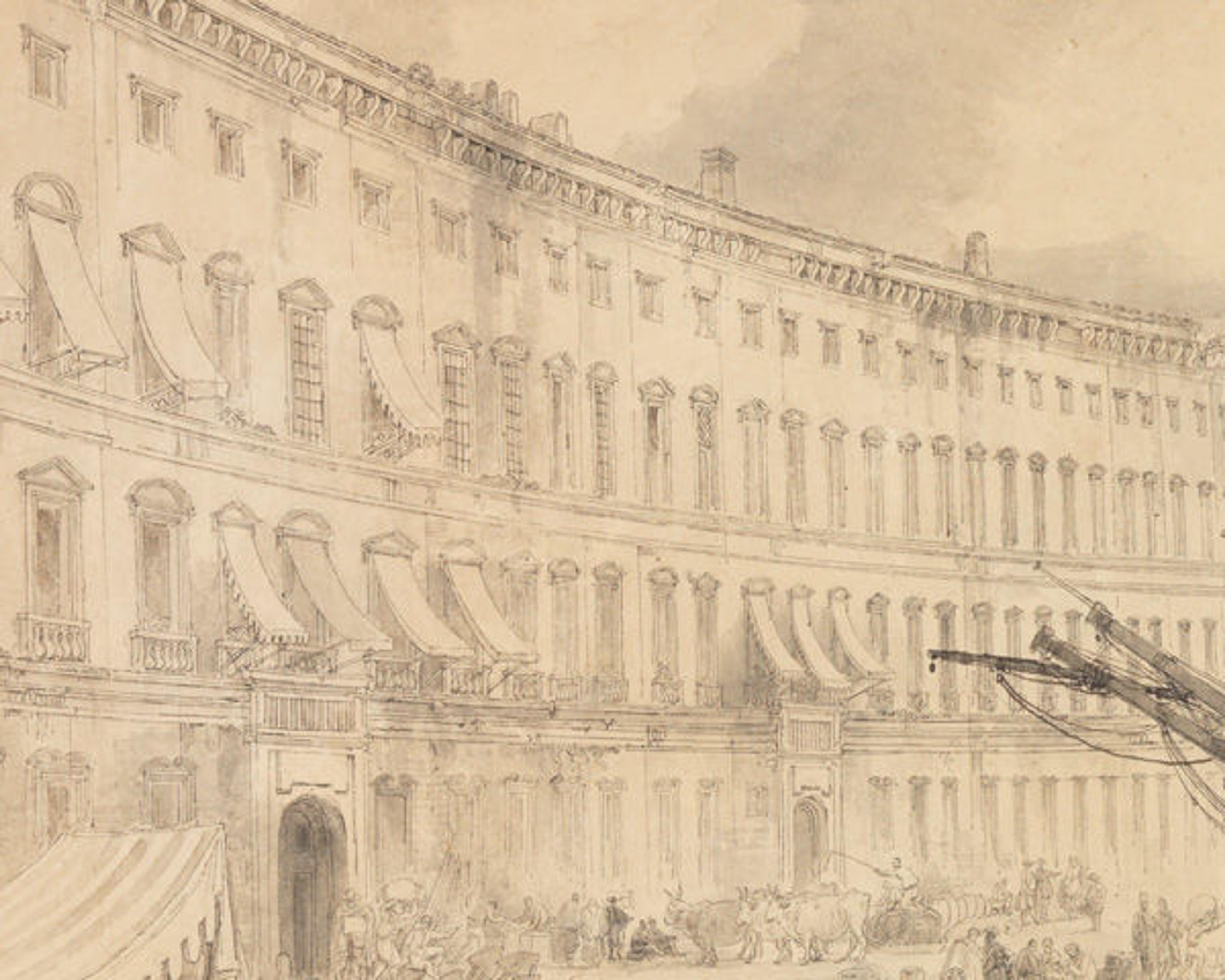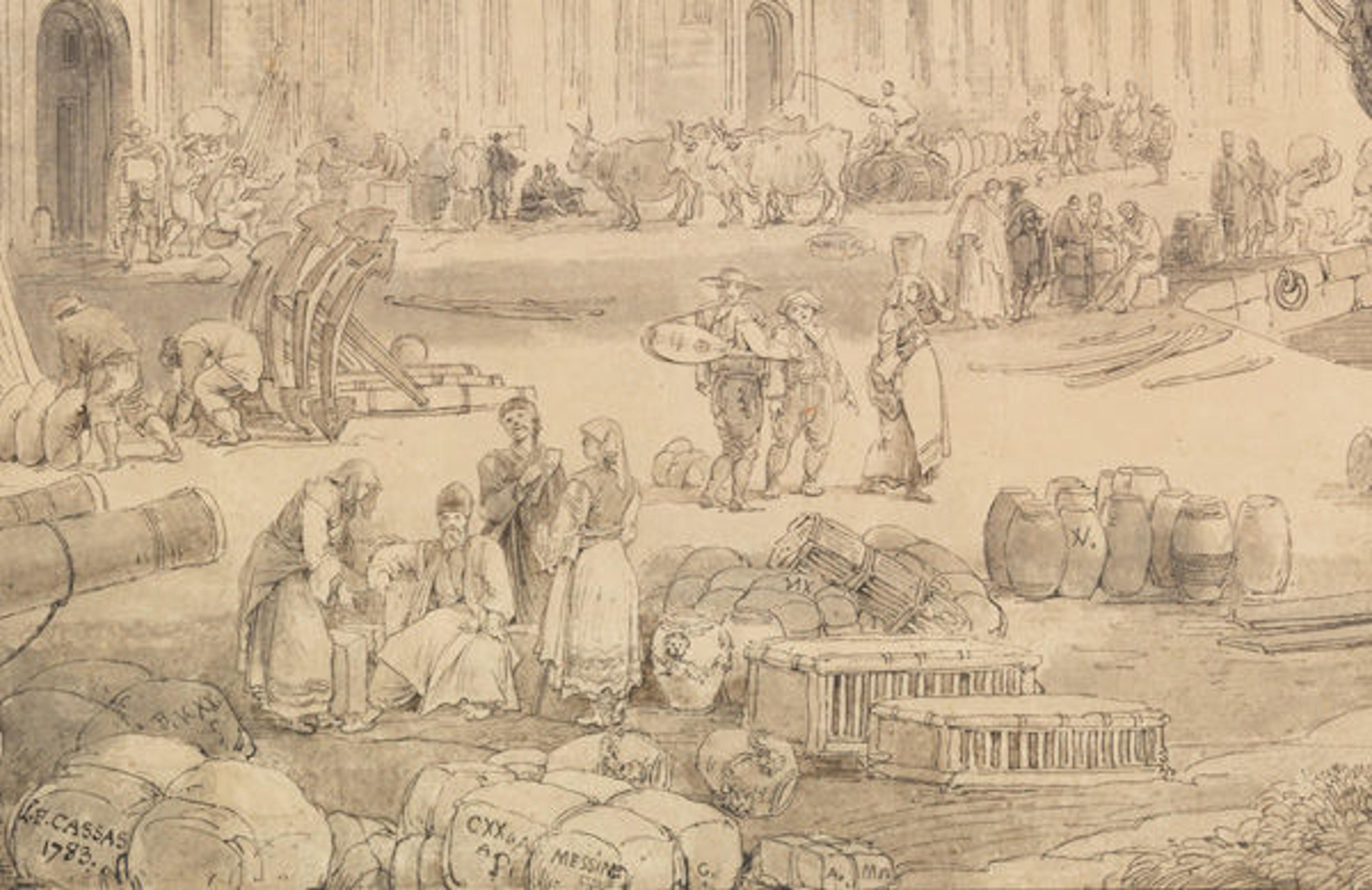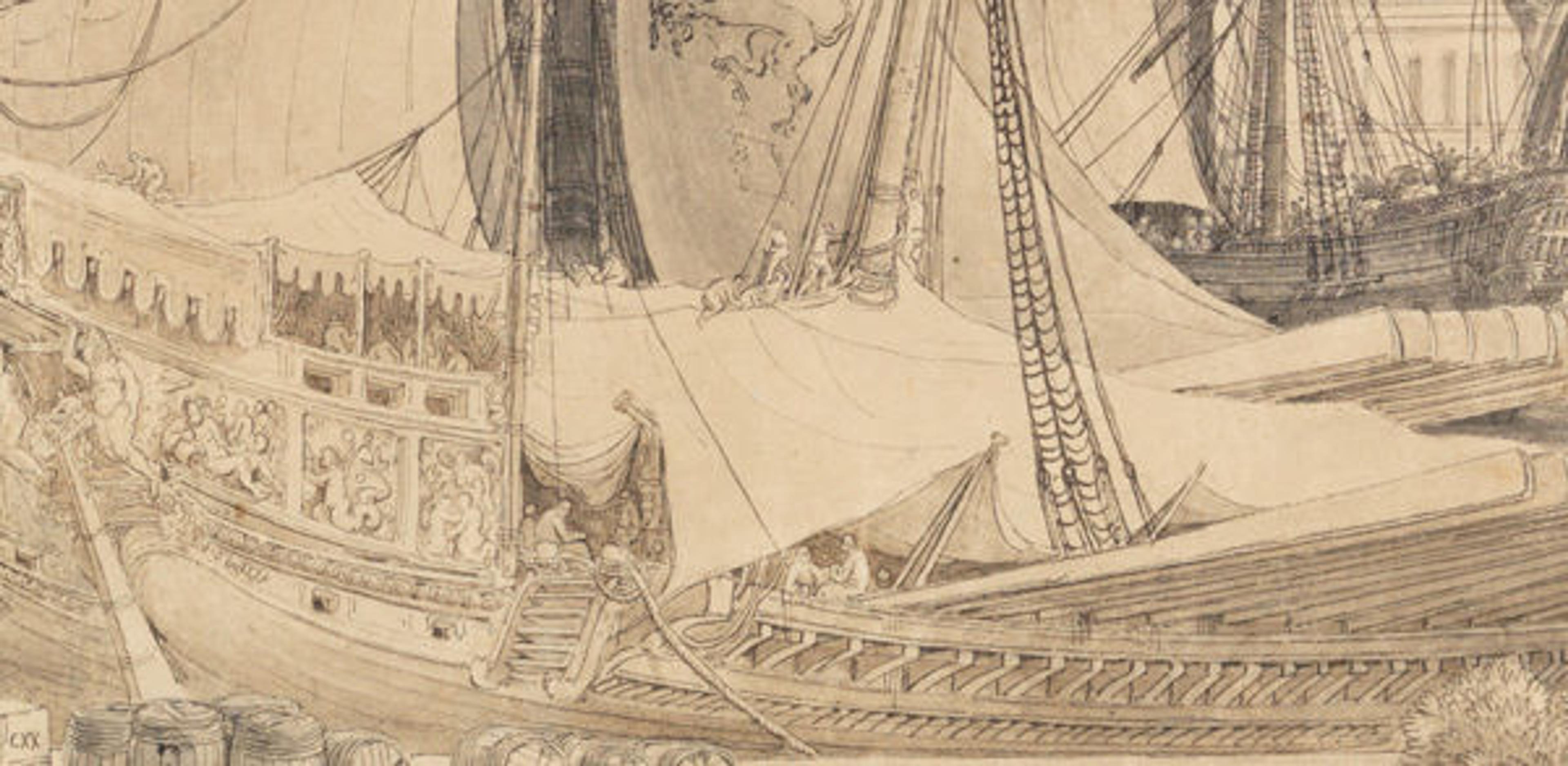Galleys in the Gallery: A Look at a Newly Acquired Drawing

Louis François Cassas (French, 1756–1827). View of Messina Harbor, 1783. Pen and black and brown ink, brush and brown and gray wash, over traces of black chalk underdrawing, framing lines in pen and black ink; 24 x 38 3/16 in. (61 x 97 cm). The Metropolitan Museum of Art, New York, Harry G. Sperling Fund Purchase, 2013 (2013.519)
«Louis François Cassas's View of Messina Harbor is a fascinating recent addition to the continuously expanding collection of eighteenth-century drawings in the Department of Drawings and Prints. The pen and wash drawing offers an idyllic view of the main harbor in Messina, Sicily, before the earthquakes that devastated the Calabrian coast in February and March of 1783. This large-format drawing is currently on view in Gallery 690 until April 28 as part of a rotation of drawings and prints from the permanent collection.»
Cassas was a French draftsman who studied with the painter Jean-Jacques Lagrenée (1739–1821) and the painter and printmaker Jean-Baptiste Le Prince (1734–1781). He made his first trip to Italy in 1779, traveling to Rome, and then on to Naples and Sicily from 1782 to 1783. Cassas made numerous drawings, both sketches and large finished sheets, over the course of his travels; some were engraved, others sold to collectors.
The drawing both documents and idealizes Messina Harbor before the destruction caused by the earthquakes. The curving architectural structure in the background with the parade of windows and balconies is a faithful rendering of the Palazzata, which was designed by Simone Gullì in 1623 and subsequently destroyed in 1783.

Detail of the Palazzata
In front of the Palazzata is a detailed glimpse of the harbor bustling with musicians, Turkish merchants and traders, sailors, and locals. Cannons and gunpowder barrels intermingle with trade goods and ship parts. Some of the sailors load the ships while others sit idly by. In the lower left-hand corner, Cassas has signed and dated the drawing.

Detail of lower left-hand corner of the drawing
Galleys, low boats propelled by sails and oars, and galleons fill the harbor. At the forefront is a galley with the oars propped up in a row. Galleys were extensively employed in early modern naval warfare in the Mediterranean, and the city of Messina was the base for a considerable galley fleet. During festivals, ephemeral galleys were constructed as symbols of Messina's maritime history. In the drawing, Cassas has detailed not only the ornamentation of the ships but the activities of the crew. Some of them climb onto the riggings, likely preparing the vessel for departure.

Detail of the foremost galley
Visible in the background is the rear view of the fountain of Neptune sculpted by Giovanni Angelo Montorsoli from 1553 to 1557. This fountain was constructed as an allegory of Messina's naval supremacy in the region. In his prime position by the harbor, Neptune was thought to calm the waves for departing ships.

Detail of the fountain of Neptune
The trees in the right foreground of the drawing are inventions of the artist, employed principally as a repoussoir device to frame the composition following the precedent of Claude Lorrain's classically inspired landscapes. Combining imaginary elements with a wealth of observed and carefully recorded details, this work can be seen as one of the last romanticized and nostalgic records of Messina, its architecture, and its naval might at the end of the eighteenth century.
Cabelle Ahn
Cabelle Ahn is a volunteer in the Department of Drawings and Prints and a Master's candidate at Bard Graduate Center.